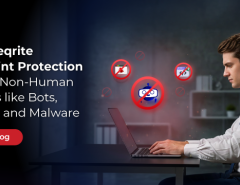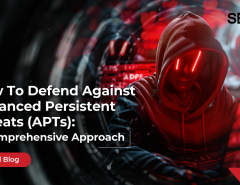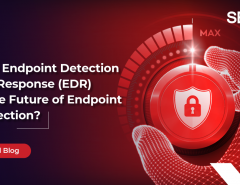Organizations using software modules are more likely to get affected by intruders and unsolicited access. Moreover, if the software is popular, there are additional chances that the connected services and written codes might attract hackers and malicious parties. Security loopholes, within an organization’s IT security framework, are known as vulnerabilities which are unavoidable with enterprises shifting towards a more software-centric deployment of resources.
Understanding Vulnerability Scanning
Similar to other forms of scrutiny, vulnerability scanning is a process of identifying weaknesses and security loopholes within an organization’s IT system. It must be understood that vulnerabilities aren’t security incidents and scanning them before a breakout is more of an assurance that everything inside is safe and functional.
The process of scanning involves running an application or rather a program on the connected network. However, the efficacy of a vulnerability scan readily depends on the available skill sets and the existing resources. Put simply; a vulnerability scanning program assesses the local services, websites, and computers while comparing their current states with the known vulnerabilities. Highly functional vulnerability scanners leverage incredibly accurate testing frameworks for comprehensive analysis which in turn keeps the false positives at bay. In addition to that, the concerned organization can use the existing software for conducting multiple scans, thereby receiving a detailed assessment report at the end.
When it comes to the scanning technology, a vulnerability scanner readily reveals the existing security loopholes associated with desktops apps, databases and network devices. This flexibility allows a business to tighten the security solutions while keeping hackers at bay. In simpler terms, vulnerability scanning is a tool that empowers an organization with the power of anticipation and assessment.
Enlisting the Commandments of Vulnerability Scanning
Vulnerability scanning is an extremely targeted approach and certainly not a shot in the dark. Needless to say, there isn’t an organization that isn’t vulnerable to threats and security incidents. Therefore, it is only fitting that a vulnerability scanner works as a critical security enhancement for an organization and checks multiple layers for threats and potential pitfalls.
1. Change Control Forms the Backbone of Vulnerability Scanning
It is important that an organization focuses explicitly on the change control associated with a vulnerability scanning program. A well documented approach allows an enterprise to understand the nooks and crannies of the scanning software sans which the services can be immediately terminated.
2. Maintain the Safety of Your IT Network
Vulnerability scanning can be risky if an organization starts off without conducting baseline scans. It is essential to assess the stability and robustness of an IT system before moving ahead with the process.
3. Proper System Credentials are Required
Configuring the vulnerability scanning program according to system credentials is an overlooked aspect that needs to be addressed. Companies like Seqrite setup perfect scan documentation for the organizations, thereby offering the most real sense of system security which isn’t restricted to the basics.
4. Scan Frequency is Important
With evolving cybersecurity threats lingering around, it becomes important for an organization to concentrate on the frequency of vulnerability scans. Regular scans are therefore necessary when it comes to understanding the nature of threat and validating the improvements required for minimizing the proliferation of security incidents.
5. Never Allow Slow Progress Demotivate you
A functional and robust vulnerability management program requires time to flourish. Therefore, it is advisable that organizations remain patient and focused without getting intimidated by the lack of instantaneous success.
How Seqrite’s Endpoint Security leverages Vulnerability Scanning?
Although Seqrite’s Endpoint Security offers a comprehensive platform for detecting threats and protecting the IT network against the security incidents, vulnerability scanning is a specially integrated feature that deserves a special mention.
Once an organization faces threats from any direction, it becomes Seqrite’s responsibility to scan the operating systems and applications for keeping the subsequent attacks at bay. This usually involves asset management for understanding the existing software and hardware configurations. Once determined, it becomes easier for a Seqrite to patch the necessary software , for staying one step ahead of the malicious parties.
Vulnerability scanning, as proposed by Seqrite, works in cohesion with the File activity monitor and Patch management solution. This association easily validates the existing popularity of Seqrite’s Endpoint Security.
Bottom-Line
Scanning an IT network for vulnerabilities is important as it allows an organization to understand the mistakes and existing glitches within the system. Once the pitfalls are addressed, it becomes easier for the concerned enterprises to stay ahead of the cybersecurity threats.
As an IT security partner for your business, Seqrite provides comprehensive endpoint security from advanced cyber threats. To know more, visit our website or




